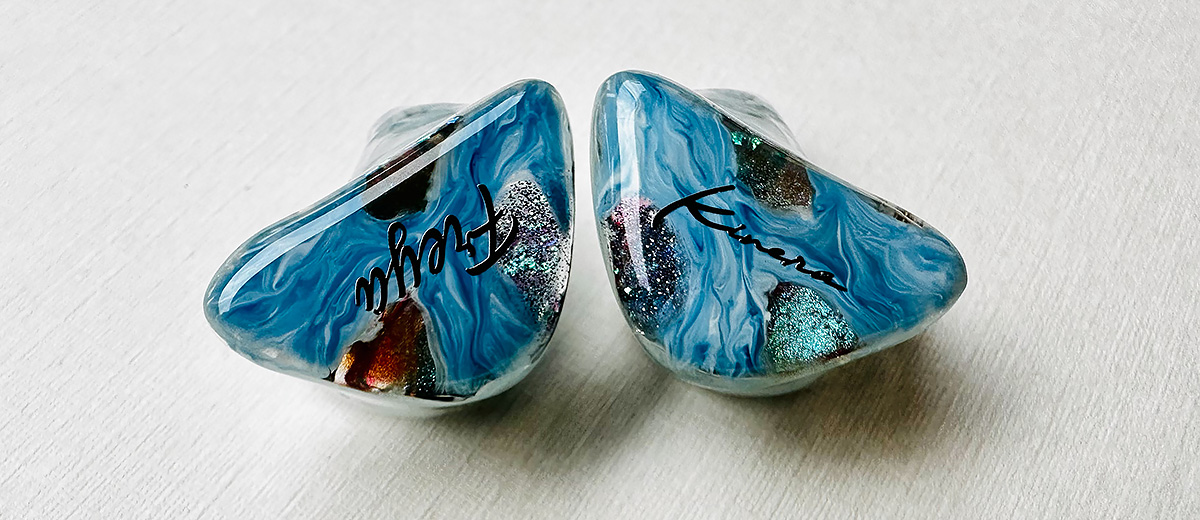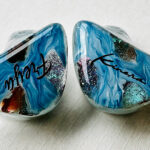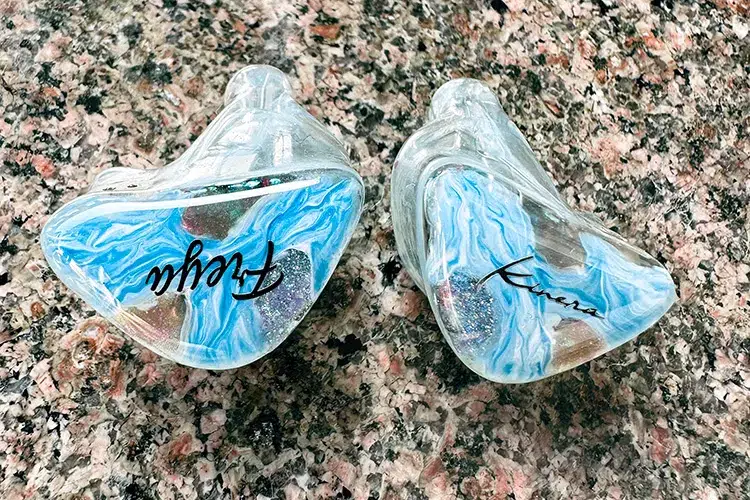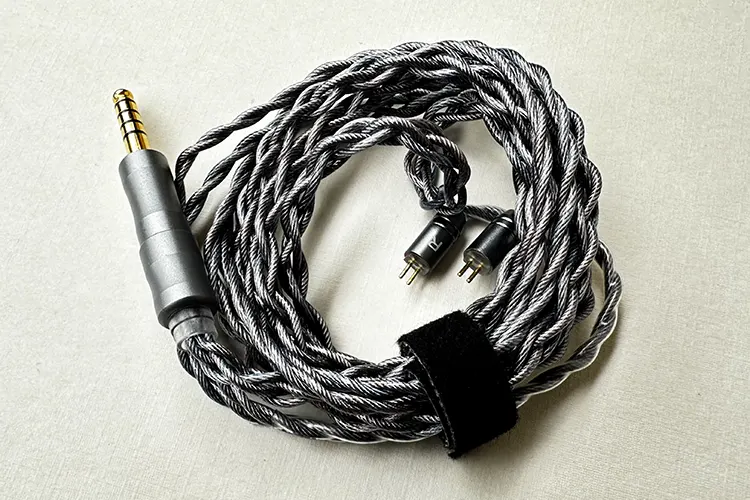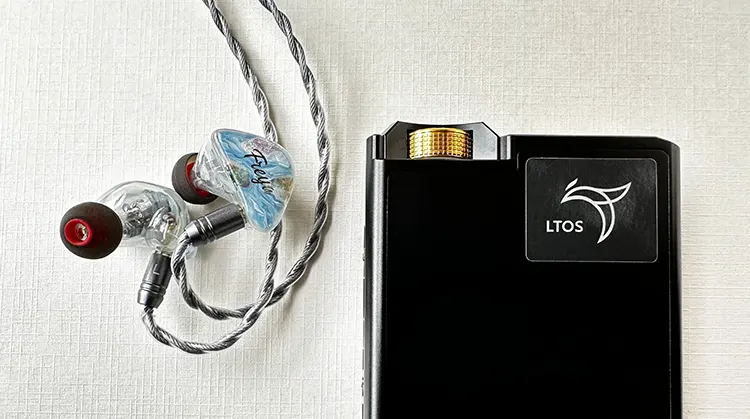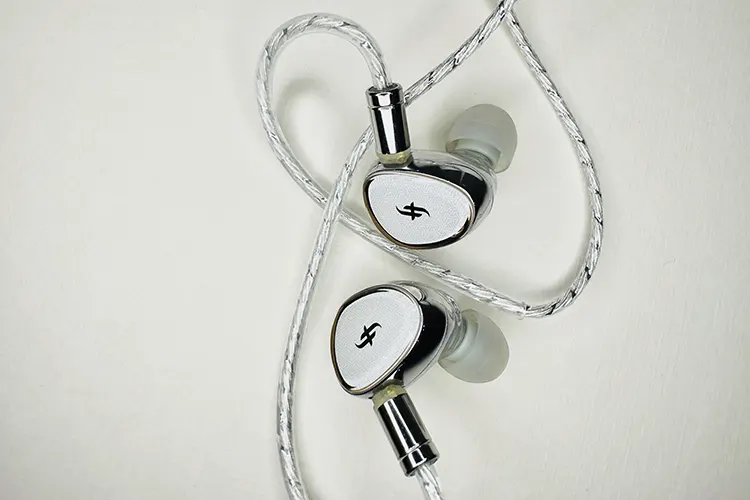Today we review the Kinera Freya 2.0, which is a 2nd generation universal IEM equipped with a hybrid single 7mm dynamic and 3 BA driver configuration. It is priced at $269.
Disclaimer: This unit is personally owned by the reviewer and is not a sample that has to be returned. Headfonics is an independent website with no affiliate links or status. You can find out more about Kinera on their main website here.
To read more about Kinera products we have previously assessed on Headfonics click here.
Note, that this article follows our latest scoring guidelines which you can read in more detail here.
The Kinera Freya 2.0 was launched in the last quarter of 2023 with the original Freya coming out just a little over 3 years previously as reviewed here on Headfonics by Louis.
Priced at $269 SRP this is one of Kinera’s midrange IEMs and only $10 more than the original which is appreciated given the way prices go up so quickly in audio.
Although Freya 2.0 boasts an appealing design and numerous features to justify its $269 price tag, regrettably, its performance in relation to the price makes it challenging to give it a clean thumbs up.
Tech Inside
The Kinera Freya 2.0 is a quad-driver hybrid universal IEM rated at rated at 25Ω impedance and 105 dB @1kHz mW SPL. The precise driver configuration is three Knowles drivers for the mids and highs and a custom 7mm dynamic driver for the lows with a 3 acoustic tube 3+1 crossover tuning.
Compared to the earlier version, this release from Kinera is supposed to have a tuning upgrade while maintaining the same number of drivers.
However, the original Freya had a custom-developed BA driver, which is now replaced by a Knowles BA driver. The Knowles version may be a more recent version than the custom type from 2020.
Design
First and foremost, the Freya 2.0 boasts a beautiful appearance. As with the original Freya, the design takes cues from Norse mythology, where Freya is a goddess associated with love, beauty, war, and gold.
The Freya 2.0 housing features a transparent base with a light blue gradient and added glitter on the faceplate, resulting in a distinctive texture.
The colors used here are lighter and more pleasant than with the original Freya. I really like the looks of these IEMs.
Comfort & Isolation
The Freya 2.0 is built of high-quality resin, which gives them a smooth body. Weighing just 3.6 grams, the shells feel exceptionally light and compact, making them comfortable for extended wear.
Thanks to the smaller size, they fit very well. They just disappear in your ears. The nozzle is not very wide but is relatively long, aiding in easy and comfortable insertion.
Despite its vented design, the Freya 2.0 provides better-than-average isolation. The isolation also depends a lot on the type of ear tips you use.
I find these IEMs to fit the best with the Final Type E tips. They also add a bit to the isolation. In my time with Freya 2.0, I did not have any pressure build-up issues, and no driver-flex issues were noticed.
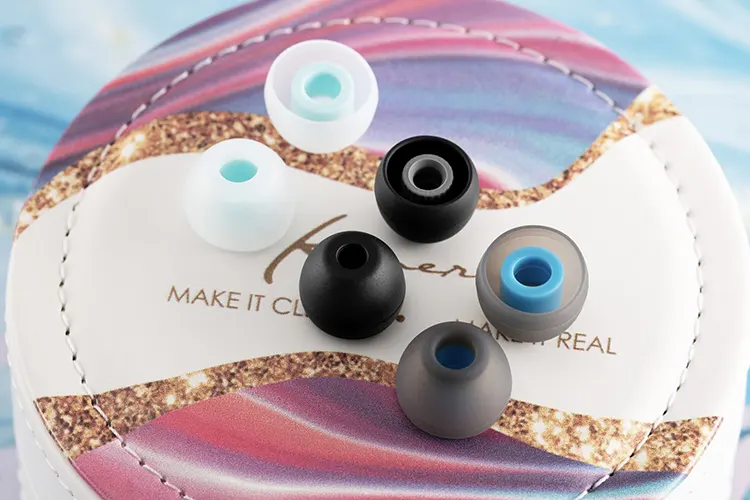
Tips
The Freya 2.0 comes with an impressive array of ear tips. These include:
- Final Type E ear tips x 5 (SS/S/M/L/LL)
- K-07 balanced ear tips x 3 (S/M/L)
- 221 vocal ear tips x 3 (S/M/L)
My personal favorite is the Final Ear tips because of the snug fit they give. Other than the above-mentioned tips, I also paired them with the Azla SednaFit light ear tips. The Azla also goes very well with these IEMs.
Stock Cable
The cable that comes with the Freya 2.0 is a modular copper cable. It has both 3.5mm and 4.4mm terminations and connects via a 0.78mm 2-pin system.
The color scheme of the cable and the termination plugs complement the aesthetics of the IEMs. The cable has a soft feel and does not tangle when coiled. For the price of these IEMs, the cable is good enough and works well.
Packaging & Accessories
The Kinera Freya 2 is packaged in a distinctive large hexagonal box with a multi-colored design matching the color scheme of the IEMs, containing a generous selection of accessories along with the IEMs. The presentation is top-notch, more than you expect from IEMs at this price point.
The carrying case is similar to the earlier version, maintaining the same complementary color scheme as the Freya 2.0 shells. It has enough space for the cable and shells to fit in. The arrangement nicely categorizes all three types of ear tips by size and type.
There is a small brush that is meant for cleaning the nozzles of the shells. There are two adapter plugs for the cable: 3.5mm and 4.4mm.
Sound Impressions
For this review, I mostly spent my time with the stock cable, stock Final E ear tips, and Lotoo’s Paw Gold Touch as my main source.
Summary
The general sound on the Freya 2.0 is balanced between bright in some parts and warm in other parts. They have typical V-shaped tuning and are more musical than technical, and they work well with some selective genres.
There is a little boost in the mid-bass region and some extra energy in the upper mids. The vocals are lush and warm.
Kinera has worked mainly on the tonality of these IEMs to make them sound more pleasant to the ears, which is very evident from the first go. Kinera claims to have tuned these earphones with a preference for pop and electronic music.
Bass
The bass on the Freya 2.0 is pleasant with a hint of warmth. There is a slight boost in the mid-bass region, which makes the bass punchy. The thick mid-bass is not bloaty or muddy in any sense, and it does not interfere with higher frequencies.
The sub-bass has a good presence too but loses the necessary impact and body. The bass does not extend well enough, and there is a lack of speed, which clearly will not satisfy bass lovers.
For some genres, such as jazz, the bass may sometimes sound on the flatter side. There is more to quantity than quality. Certainly, this is not an ideal bass definition one would want in this price range.
However, with genres such as pop and electronic, there is some mid-bass boom advantage that some people may like. This mid-bass boom hits the midrange, at times taking away the sweetness.
Midrange
The midrange on the Freya 2.0 is well-bodied but not as forward as one would like them to be.
The lower mids have a hint of warmth and more body than the rather thin and bright upper mids. This warmth comes from the mid-bass boost in the bass region, which at times takes away the details from the lower mids.
The thinness in the upper mids, however, does not result in a lot of unwanted sharpness and sibilance. The vocals sound engaging, though a bit distant and sometimes thin, especially with the female vocals.
This becomes quite evident on busy tracks where there are more instruments; the vocals seem a bit lost due to a lack of body.
The added warmth from the bass region and lack of crispiness in the mid-region affect the tonality of the IEMs making some tracks less enjoyable.
Treble
Treble on the Freya 2.0 is not something that can attract a lot of attention. There is a lack of treble energy and extension, because of which treble details are lost. The sound of cymbals and higher-frequency tones on string instruments seems to dissipate into thin air.
The air, sparkle, and microdetails lose their presence due to the lack of treble energy, especially in the upper treble region. This, combined with the boosted mid-bass gives a gloomy characteristic to the tonality.
Staging
The Freya 2.0 takes a back seat as far as technicalities are concerned. These IEMs have above-average staging with decent width but not as good depth.
The imaging and layering are not as precise as one would like them to be. In addition to that, the resolution and detail extraction of these IEMs are below average.
On some tracks where the bass presence is prominent, there is a lack of clean and clear sound. The treble doesn’t exhibit the natural extension and brilliance it could have, which makes it sound hazy.
This hits the listening experience in a bad way, which is all the more pronounced on busy tracks like rock and metal.
Synergy
The Freya 2.0 requires a bit of extra power compared to some other IEMs to fully reveal its capabilities due to its low sensitivity of 105 dB @1kHz and an impedance of 20Ω, though not to a level that requires an external amp.
Even when using a 4.4mm balanced output, I notice the need to adjust the volume a few levels higher than my usual listening levels. However, with more powerful sources such as the PAW Gold Touch, I do not notice any significant change in performance.
Select Comparisons
SIMGOT EA1000
Technical
The Simgot EA1000 “Fermat” is a single 10mm dynamic driver IEM with a 6mm passive radiator. It has an impedance of 16 ohms and a sensitivity of 127 dB @1kHz/Vrms which makes it efficient even with low power input.
Design
The Simgot EA1000 is an all-metal solid-built IEM. It is quite small in size but has more weight than Freya 2.0, just above 10 grams per side. The nozzle is short and wide compared to Freya.
The included cable is of decent quality but comes with a single-ended 3.5mm plug. In terms of design and fit, Freya 2.0 has an edge here.
Performance
Bass on EA1000 has a better response. It has better impact and good speed compared to Freya’s rather thick and slow bass. The bass feels more natural on the EA1000, which has a good extension and natural feel to the bass texture. EA1000 bass is about good quantity as well as quality.
In the mids department, EA1000 performs better. It has smooth and more forward vocals that feel cleaner and more soulful than the Freya 2.0. Because of the average resolution, the mids feel a bit hazy on the Freya 2.0.
A similar story goes with the treble. The Freya 2.0 loses energy in the upper treble region, which is quite well extended in EA1000. There is a better sense of detail and clarity in the treble with EA1000.
Though the soundstage is just above average in both of these IEMs, the Freya 2.0 has a better sense of spaciousness. The EA1000 is a clear winner when it comes to timbre, owing to its richer and cleaner midrange, which is also forward.
ORIVETI OD200
Technical
The ORIVETI OD200 is a custom-tuned beryllium-coated 9.8mm single dynamic driver iem. The IEMs come with interchangeable nozzle filters including a black and silver nozzle. The silver nozzle adds a bit to the lower and mid-bass, and the treble is less sharp on it compared to the black nozzle.
It has an impedance of 16Ω and a sensitivity of 108 dB @1kHz/Vrms. The OD200 is fairly easy to drive, and it does open up with more powerful sources.
Design
The OD200 has an all-metal body that is small and lightweight but not as light as the Freya 2.0. It has a subtle and classy design that is not as vibrant or colorful as the Freya 2.0.
The cable that comes with the OD200 is a modular cable with both 3.5mm and 4.4mm terminations. The quality of this cable is quite comparable to that of the Freya 2.0.
Performance
Similar to the Freya 2.0, the OD200 has a thick bass texture but better precision and texture. Bass has more authority and speed on the OD200.
The midrange of the OD200 is more forward and sweeter. The vocals have more weight to them, and the bass does not overshadow the midrange. The treble on the OD200 has more energy and airiness. The level of detail retrieval is more or less the same in these two sets.
The OD200 is slightly ahead with a better soundstage and imaging. There is more openness to its sound and better resolution than the Freya 2.0, which makes it more enjoyable for both IEMs.
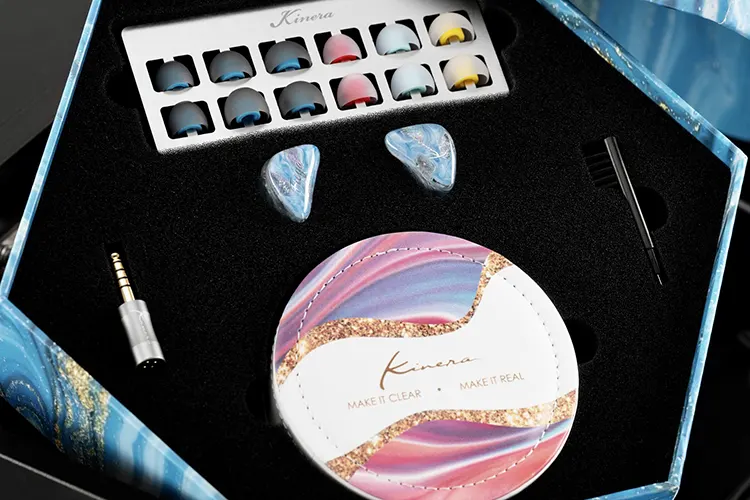
Our Verdict
Although the Kinera Freya 2.0 boasts an appealing design and numerous features to justify its $269 price tag, regrettably, its performance in relation to the price makes it challenging to give it a clean thumbs up.
On the technical front, these IEMs fail to deliver. There is a lot of scope for improvements in areas such as resolution and staging. In today’s fiercely competitive budget IEM market, these earphones struggle to make a memorable impact.
Kinera Freya 2.0 Technical Specifications
- 7mm DD + 3 Knowles BA
- Impedance: 20 ohms
- Sensitivity: 105 dB
- Frequency Response: 20Hz-50kHz
- Alloy Copper Cable
- Plug with 3.5mm and 4.4mm
- Final Type E ear tips x 5 (SS/S/M/L/LL)
- K-07 balanced ear tips x 3 (S/M/L)
- 221 vocal ear tips x 3 (S/M/L)

